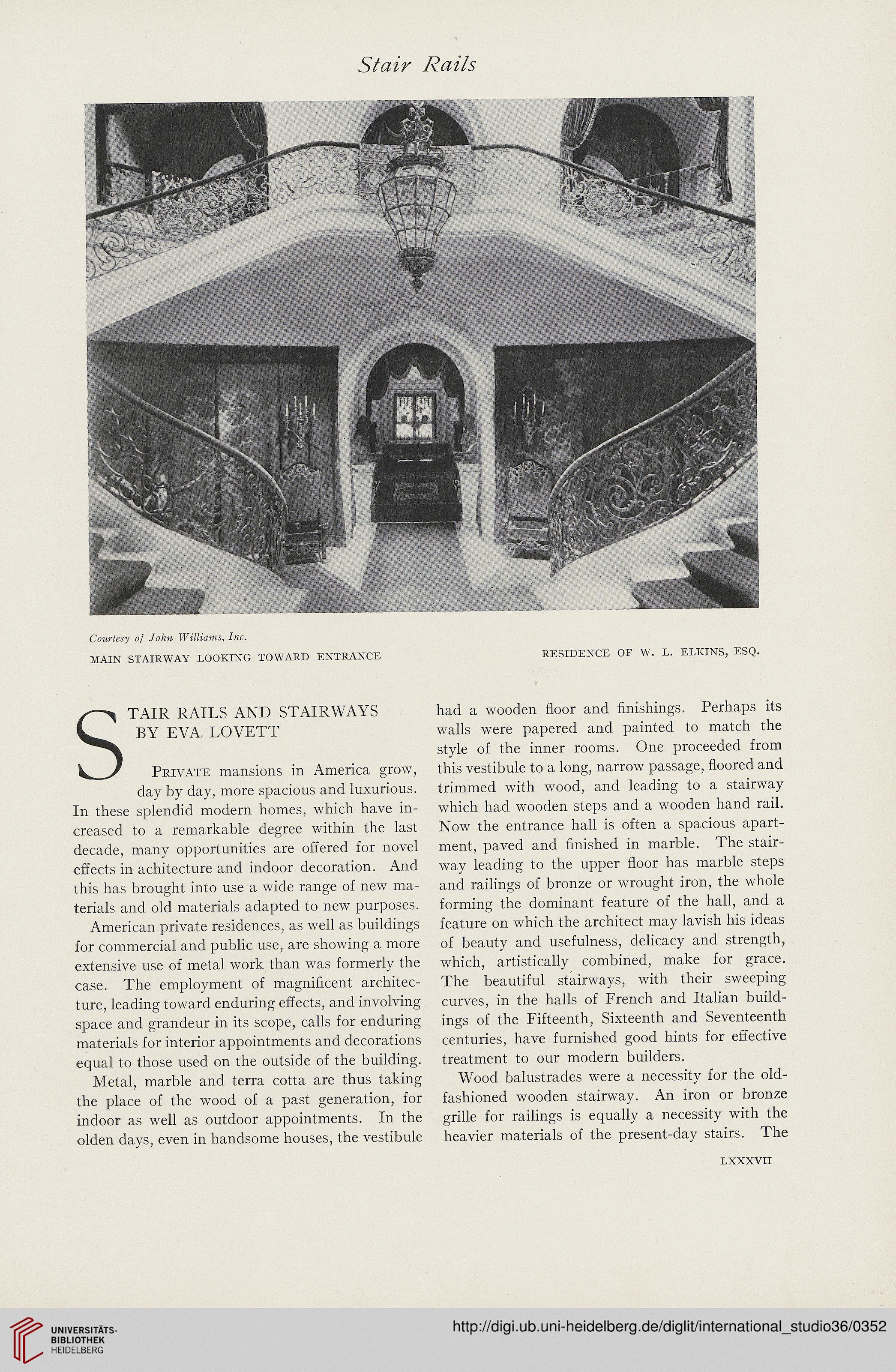MAIN STAIRWAY LOOKING TOWARD ENTRANCE RESIDENCE OE W. L. ELKINS, ESQ.
s
TAIR RAILS AND STAIRWAYS
BY EVA LOVETT
PRIVATE mansions in America grow,
day by day, more spacious and luxurious.
In these splendid modern homes, which have in-
creased to a remarkabie degree within the last
decade, many opportunities are oflered for novel
effects in achitecture and indoor decoration. And
this has brought into use a wide range of new ma-
terials and oid materials adapted to new purposes.
American private residences, as weli as buiidings
for commercial and pubiic use, are showing a more
extensive use of metal work than was formeriy the
case. The employment of magnificent architec-
ture, ieading toward enduring effects, and involving
space and grandeur in its scope, calls for enduring
materiais for interior appointments and decorations
equai to those used on the outside of the buiiding.
Metai, marble and terra cotta are thus taking
the place of the wood of a past generation, for
indoor as weil as outdoor appointments. In the
oiden days, even in handsome houses, the vestibule
had a wooden Soor and hnishings. Perhaps its
walls were papered and painted to match the
style of the inner rooms. One proceeded from
this vestibule to a long, narrow passage, floored and
trimmed with wood, and leading to a stairway
which had wooden steps and a wooden hand rail.
Now the entrance hall is often a spacious apart-
ment, paved and hnished in marble. The stair-
way leading to the upper door has marble steps
and railings of bronze or wrought iron, the whole
forming the dominant feature of the hall, and a
feature on which the architect may lavish his ideas
of beauty and usefulness, delicacy and strength,
which, artistically combined, make for grace.
The beautiful stairways, with their sweeping
curves, in the halls of French and Italian build-
ings of the Fifteenth, Sixteenth and Seventeenth
centuries, have furnished good hints for effective
treatment to our modern builders.
Wood balustrades were a necessity for the old-
fashioned wooden stairway. An iron or bronze
grille for railings is equally a necessity with the
heavier materials of the present-day stairs. The
LXXXVII





